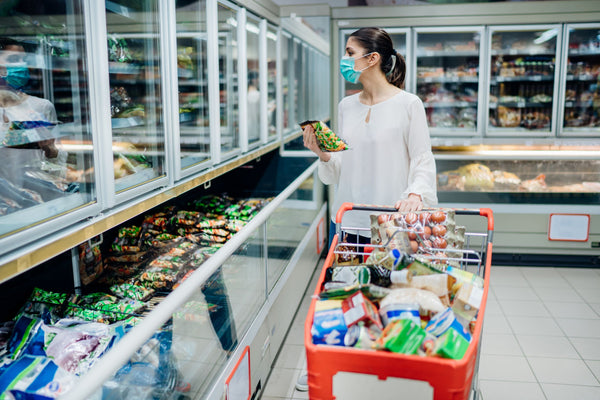Spring is in the air! Flowers are blooming, birds are chirping, and the sun is setting later. But unlike last Spring, something is different this year — COVID-19 numbers are dwindling across much of the world!
Thanks to vaccine distributions as well as coronavirus protection measures like face masks and social distancing, it seems that this pandemic's days are finally numbered. But we're not exactly out of the woods yet. Here are some tips to help you stay safe as the U.S. economy reopens.
1. Plan Your Activities Ahead of Time
As states across America lift lockdown restrictions and remove mask mandates, it can be easy to feel like we can go anywhere we want without a care in the world. But while things are certainly getting better with the pandemic, it's not completely over yet. For this reason, it's imperative that you don't let your guard down.
While face mask protection and social distancing aren't enforced, they're still highly recommended during these times. Each time you leave the house, consider all of the activities you'll be doing as well as the destinations you'll be visiting. This not only minimizes the number of times you have to leave your house but also ensures that you have the necessary COVID-19 protection equipment.

Want to be extra safe? Make a checklist of the things you need to bring with you to mitigate your COVID-19 infection risk (e.g., face masks, hand sanitizer, etc.) and stick it somewhere that you'll always see before leaving your front door. Also, always bring more than you need so that you're prepared for any unexpected situations.
2. Proceed Deliberately and Unidirectionally
Scientists working on virus vaccines and medical workers in contaminated hospital environments take a methodical approach to moving around their facilities: They move deliberately and unidirectionally from low-risk areas to high-risk areas. This mitigates the chances of contaminating low-risk areas.
You should take a similar approach when mapping out your errands and destinations. Consider each place's exposure risk and go from there. For example, pretend you need to get money from the bank, buy groceries, get gas, and mail a package. The bank ATM and gas station pose the lowest amount of risk since they're outside and naturally socially distant, so these should come first. You can then follow these destinations up with ones that have a higher probability of encountering people, like the grocery store and post office.
Regardless of the number of people around you, be cognizant of the surfaces you come in contact with — they could be regularly touched by many people throughout the day. Always use hand sanitizer after touching these surfaces and before touching your car keys or steering wheel. This decreases the number of germs you transfer.
3. Put on Your PPE
Considering that we're more than a year into the pandemic, this one probably doesn't need to be said, but: Keep wearing your personal protection equipment (PPE) when you're out and about in public. Even if you've gotten the vaccine, you could still transmit COVID-19 germs to friends and family who haven't. So it's vital that you don't let your guard down just yet.

On the flip side, leave non-essentials like your cell phone, snacks, and make-up behind in the car. Don't even consider using any of these types of items in a public zone; this increases the chances of infection or transmission. If you do decide to take your phone with you, keep it somewhere that you won't instinctively grab it with contaminated hands, even if it rings.
4. Safely Remove Your PPE
Removing PPE actually presents a high risk of germ contamination and transmission, so doing this step properly is just as essential as the previous one. When returning to your car, sanitize your hands before touching and removing your face mask. Then sanitize your hands again before you touch your car's steering wheel. If you touched any personal items while in a "hot zone," like your car keys, purse, or wallet, wipe them down with a disinfectant.

When you get home, the very first thing you should do is wash your hands. Laundering your clothing or taking a shower isn't necessary unless you were in a high-risk environment where sick patients were constantly coughing or sneezing.
The End Is In Sight
We know you're probably tired of taking safety precautions for the COVID-19 pandemic. We are, too! But hang in there and practice these tips as often as possible until they become routine. This helps to reduce your risk of infection and transmission to loved ones.
We're on our way to brighter days. COVID-19 numbers are falling around the world. If we keep this up, the pandemic will soon be over. But it's vital that we all do our part. Remember, though we may be separated, we're all in this together. Stay safe out there!
Want to distribute anti-microbial treated neck gaiters and face masks that protect you from 99.9% of bacteria, viruses, mold, and fungus? Learn more here!

